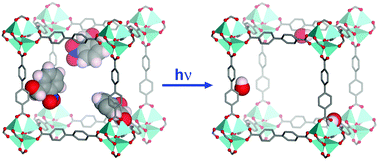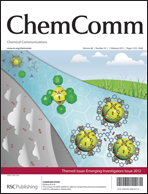Photolabile protecting groups in metal–organic frameworks: preventing interpenetration and masking functional groups†‡
Abstract
Photolabile groups can be incorporated into metal–organic frameworks (MOFs) and then quantitatively cleaved following MOF formation. Here, a 2-nitrobenzyl ether prevents lattice interpenetration (catenation) in a cubic MOF derived from zinc(II). Subsequent photolysis unmasks a hydroxyl group, and produces an open MOF that cannot be synthesized directly.

- This article is part of the themed collection: Emerging Investigators 2012

 Please wait while we load your content...
Please wait while we load your content...